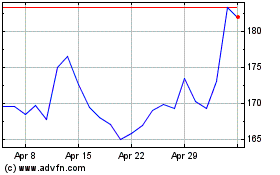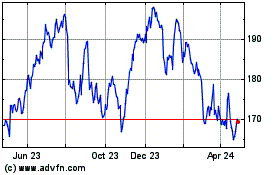Enhancements to Xcode and Swift, combined with new APIs, offer
developers expanded capabilities for creating high-quality apps
Apple® today unveiled a suite of innovative new tools and
resources designed to enable developers worldwide to create more
powerful and efficient apps across all Apple platforms. With Xcode®
16, developers can save time in their development process and get
more done thanks to features like Swift® Assist and predictive code
completion. New and expanded APIs give developers the tools to
advance their apps and introduce exciting features.
This press release features multimedia. View
the full release here:
https://www.businesswire.com/news/home/20240610893641/en/
Apple unveiled a suite of innovative new
tools and resources designed to enable developers worldwide to
create more powerful and efficient apps across all Apple platforms.
(Photo: Business Wire)
“At Apple, we are dedicated to providing developers everywhere
with the cutting-edge technologies and resources to build
incredible apps,” said Susan Prescott, Apple’s vice president of
Worldwide Developer Relations. “With thoughtful innovation behind
Xcode 16 and our latest platform APIs, we’ve created the best tools
for developers to create outstanding apps. We’re excited to see
what they build next.”
Xcode 16
Xcode 16 sets a new standard for developer productivity,
offering features and performance enhancements that empower
developers to build exceptional apps faster than ever before.
Swift Assist serves as a companion for all of a developer’s
coding tasks, so they can focus on higher-level problems and
solutions. It’s seamlessly integrated into Xcode, and knows the
latest software development kits (SDKs) and Swift language
features, so developers will always get the latest code features
that blend perfectly into their projects. With Swift Assist, tasks
like exploring new frameworks and experimenting with new ideas are
just one request away. Swift Assist uses a powerful model that runs
in the cloud — and like all Apple developer services, it is built
with privacy and security in mind. Developers’ code is only used to
process requests and never stored on servers, and Apple will not
use it to train machine learning models.
The new predictive code completion engine in Xcode uses a unique
model specifically trained for Swift and Apple SDKs, and can
suggest the code developers need. Code completion is powered
entirely by Apple silicon and machine learning enhancements in
macOS® Sequoia, and runs locally on a developer’s device — meaning
that code is kept completely private, and developers can receive
relevant suggestions quickly even when working offline.
Xcode previews now offer a new dynamic linking architecture that
uses the same build artifacts for previews and code execution,
making for a smoother and more productive workflow when switching
between the two.
Additional enhancements to testing environments in Xcode 16 make
it easier than ever for developers to see how their apps perform in
real-world conditions from the moment they begin building them. For
example, developers can now localize and test their apps’ privacy
policies, license agreements, and subscription group display
name.
Swift 6
Swift 6 introduces new capabilities aimed at enhancing developer
productivity and code clarity. As multicore architectures have made
devices more powerful, Swift has continually added features to make
concurrent programming easier. Swift 6 introduces compile-time
data-race safety, which diagnoses concurrent access to memory
across a developer’s project at compile time. This advancement
allows errors to be caught and fixed with minimal changes to the
entire codebase, enhancing code safety and maintainability for the
future.
WWDC24 marks the 10th anniversary of Swift. Since its launch,
Swift has empowered developers to create high-quality experiences
across Apple’s ecosystem. Today, nearly 1 million apps use Swift,
and it’s utilized throughout Apple’s software stack — from apps and
frameworks, all the way down to firmware like Secure Enclave.
A decade in, Apple remains deeply committed to advancing Swift’s
capabilities and fostering collaboration within the developer
community. Apple is expanding the availability of Swift to a
broader range of developers and programmers, with support for
additional code editors that leverage the Language Server Protocol.
Furthering its expansion, an all-new GitHub organization dedicated
to Swift will host a number of critical projects for the Swift
ecosystem — including the Swift compiler, Foundation, and other key
libraries.
Swift Testing
The new Swift Testing framework offers developers expressive
APIs that make it simple to write tests. It’s cross-platform and
easy to learn, so developers can use it to write tests for a
variety of platforms and domains. The framework also includes a
flexible tagging system to help developers organize their tests and
test plans. Swift Testing is designed for many Swift use cases,
from apps to servers.
Game Porting Toolkit 2
With the introduction of Game Porting Toolkit, developers have
been able to bring their games to Apple devices faster than ever,
and gaming enthusiasts can experience more games on Mac®. Game
Porting Toolkit 2 takes this to the next level with some of the
most-requested capabilities from game developers, making it even
easier to bring advanced games to Mac, as well as iPhone® and
iPad®. Whether a developer is bringing an existing game or one
that’s currently in development to Apple devices, Game Porting
Toolkit 2 saves precious time. Thanks to improved compatibility
with Windows games, powerful new shader debugging tools, and
updates to Xcode that let developers unify their game code and
shaders across devices, it’s never been easier to create amazing
games across iPhone, iPad, and Mac.
visionOS 2
Apple Vision Pro™ continues to attract developers from all over
the world who tap into its unique capabilities to create new
spatial experiences — all powered by visionOS, the revolutionary
spatial operating system that seamlessly blends digital content
with the physical world. visionOS 2 introduces new APIs and
frameworks, assisting developers with creating complex and nuanced
spatial experiences that were never before possible.
New volumetric APIs give developers more control over how 3D
objects appear in their apps, and allow even the most complex
spatial apps to run side by side for the ultimate multitasking
experience. TabletopKit makes it easy for developers to build
spatial app experiences that anchor to flat surfaces, like
manufacturing workstations or board and card games. RealityKit®
simplifies development for apps that support multiple Apple
devices, decreasing development time and making workflows more
efficient for Universal apps.
Developers can more easily create beautiful and immersive
environments within their apps through new APIs, improved tooling,
and a simplified development process. It’s also even easier to
develop incredible spatial SharePlay™ experiences, and developers
without Apple Vision Pro hardware can now create and preview
SharePlay-based apps in Simulator. visionOS 2 also supports
HealthKit ®, which allows apps to privately and securely access and
share health data.
New enterprise APIs will help enterprises and business
developers supercharge their workflows in healthcare,
manufacturing, aerospace, automotive, and beyond.
Additional Platform APIs
Developers can adopt the new Controls API to let users
accomplish even more tasks from even more places, such as to
quickly unlock their vehicle or open their favorite third-party
camera right from the Control Center.
AccessorySetupKit allows developers to seamlessly and securely
pair Bluetooth accessories through their app without relying on
access to all nearby Bluetooth accessories, keeping other devices
private.
With updates to the Smart Stack on Apple Watch®, developers will
be able to use cues like time and date, location, wake up and
bedtime, and more to make their apps show up as suggested widgets.
And for the first time ever, apps that support Live Activities will
automatically show up on Apple Watch.
Developers also now have access to a new watchOS double tap API
so they can assign the gesture to key parts of their Apple Watch
app experience.
TestFlight
TestFlight® helps developers collect valuable beta feedback from
testers to improve an app throughout the development and release
process. With improvements to the TestFlight invitation and
enrollment experience, developers will be able to engage testers by
device and OS to receive higher-quality feedback for how to improve
their apps.
TestFlight invitations will include the beta app’s description,
app category, and optional screenshots to highlight new features
and content for prospective testers. New metrics help developers
evaluate engagement with public links and view invitation
acceptances or declines.
App Store
For over 15 years, the App Store® has made it easy for
developers to distribute their apps and games to people all over
the world and grow their businesses. This year, the App Store adds
new ways for developers to get their apps discovered and new
features for monetizing with subscriptions.
New featuring nominations let developers easily nominate their
apps’ upcoming content and enhancements for consideration to be
featured on the App Store. Developers can submit nominations in App
Store Connect and include details such as publish date and relevant
countries or regions. The expert App Store editorial team reviews
each submission to help connect great apps and games with people
who will love them.
Custom product pages enable developers to showcase different
content and features that are available in their apps. Now, with
custom product page deep links, developers can seamlessly direct
people from a particular custom product page on the App Store to a
relevant place within their apps. Deep links can also be used with
Search Ads campaigns to provide a more consistent experience for
users, from what they see in an ad to where they land in the
app.
For subscription apps, developers can encourage former
subscribers to resubscribe with new win-back offers. Eligible
customers can discover these offers across the App Store as well as
in their apps. For macOS apps, developers can provide discounted or
free subscriptions for a period of time with offer codes to
acquire, retain, and bring back former subscribers.
Enhancements to StoreKit® views give developers new options to
organize and present in-app purchases.
App Analytics has been expanded to help developers get even more
insight into their business and their apps’ performance. Reports
now include hundreds of new metrics that enable developers to find
opportunities for improvement.
App Store Connect
The App Store Connect app for iOS and iPadOS® features an
updated user interface and introduces a new way for developers to
promote their apps’ special moments. Whether they’re launching a
brand-new app or shipping an exciting new app update, developers
can now effortlessly generate marketing assets from App Store
Connect to share directly onto their social channels. If an app has
been featured as App of the Day, developers will receive a push
notification from App Store Connect inviting them to create a
special marketing asset to commemorate the moment.
Today’s updates join an ever-growing abundance of tools,
technologies, and resources Apple makes available for developers.
For more details about the key technologies and exciting
capabilities available today, visit
developer.apple.com/whats-new.
Apple revolutionized personal technology with the introduction
of the Macintosh in 1984. Today, Apple leads the world in
innovation with iPhone, iPad, Mac, AirPods, Apple Watch, and Apple
Vision Pro. Apple’s six software platforms — iOS, iPadOS, macOS,
watchOS, visionOS, and tvOS — provide seamless experiences across
all Apple devices and empower people with breakthrough services
including the App Store, Apple Music, Apple Pay, iCloud, and Apple
TV+. Apple’s more than 150,000 employees are dedicated to making
the best products on earth and to leaving the world better than we
found it.
NOTE TO EDITORS: For additional information visit Apple Newsroom
(www.apple.com/newsroom), or email Apple’s Media Helpline at
media.help@apple.com.
© 2024 Apple Inc. All rights reserved. Apple, the Apple logo,
Xcode, Swift, macOS, Mac, iPhone, iPad, Apple Vision Pro,
RealityKit, SharePlay, HealthKit, Apple Watch, TestFlight, App
Store, StoreKit, and iPadOS are trademarks of Apple. Other company
and product names may be trademarks of their respective owners.
View source
version on businesswire.com: https://www.businesswire.com/news/home/20240610893641/en/
Adam Dema Apple AdamDema@apple.com
Apple (NASDAQ:AAPL)
Historical Stock Chart
From May 2024 to Jun 2024

Apple (NASDAQ:AAPL)
Historical Stock Chart
From Jun 2023 to Jun 2024
